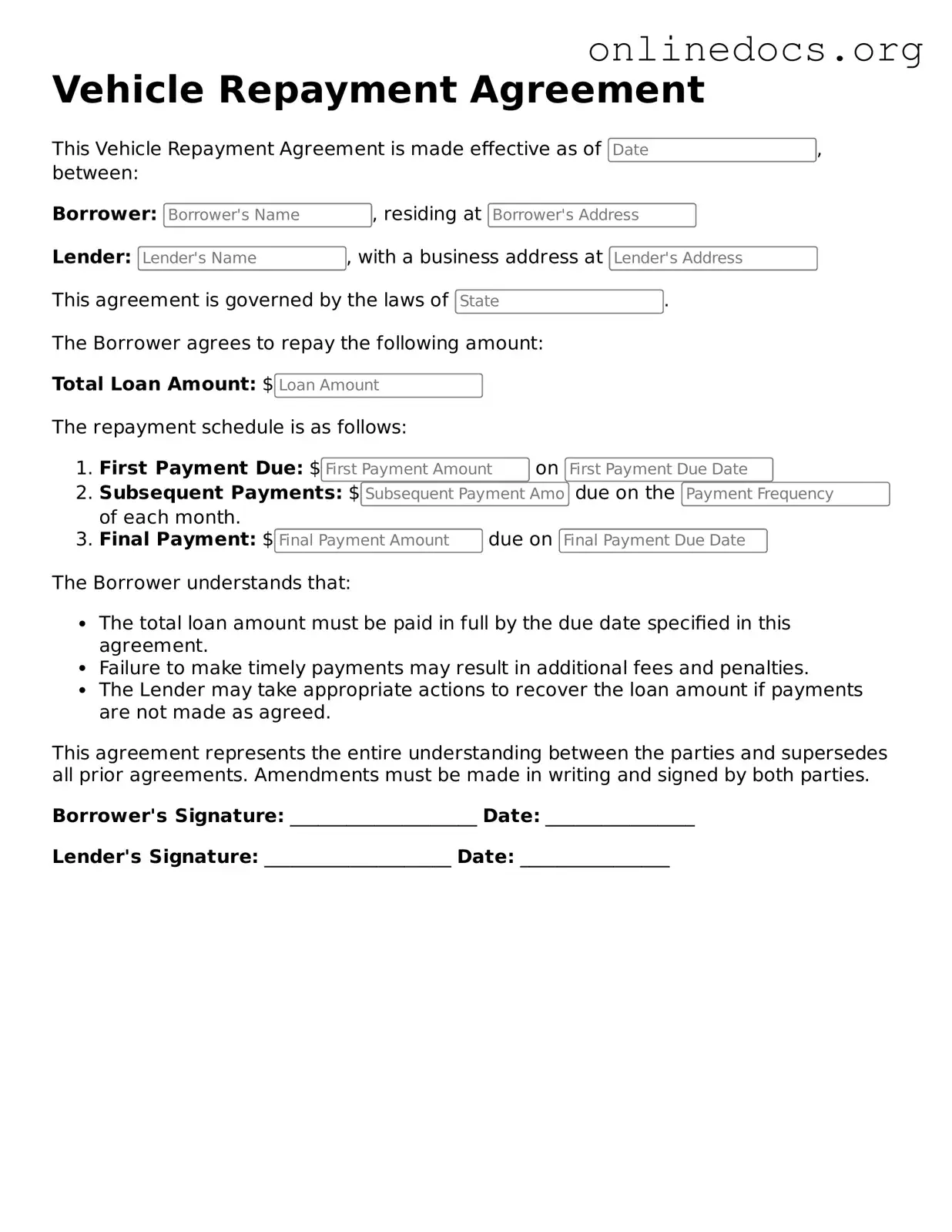The Vehicle Purchase Agreement outlines the terms and conditions when buying a vehicle. It includes details such as the purchase price, payment schedule, and any warranties. Like the Vehicle Repayment Agreement, it establishes a mutual understanding between the buyer and seller, ensuring that both parties are clear on their obligations.
The Loan Agreement is a formal document that outlines the terms of a loan between a lender and a borrower. It specifies the amount borrowed, interest rates, and repayment terms. Similar to the Vehicle Repayment Agreement, it serves to protect the interests of both parties and provides a clear framework for repayment.
In the realm of residential real estate, understanding the terms and conditions outlined in documents such as the California Residential Lease Agreement is crucial for both landlords and tenants. This https://californiapdfforms.com/residential-lease-agreement-form/ serves not only to protect the rights of both parties involved but also to provide a comprehensive framework detailing rent, lease duration, and responsibilities, ensuring clarity in their relationship.
The Lease Agreement is used when a vehicle is rented rather than purchased. It details the lease terms, including monthly payments and duration. Like the Vehicle Repayment Agreement, it ensures that both the lessee and lessor understand their responsibilities regarding payment and vehicle care.
The Bill of Sale is a document that records the transfer of ownership of a vehicle. It includes information about the buyer, seller, and vehicle details. While it serves a different purpose, it shares similarities with the Vehicle Repayment Agreement in that it formalizes a transaction and provides proof of ownership and terms agreed upon.
The Promissory Note is a written promise to pay a specified sum of money to a designated party at a defined time. This document, like the Vehicle Repayment Agreement, establishes a clear obligation for repayment, making it easier to enforce if necessary.
The Security Agreement is used when a borrower offers collateral for a loan. It outlines the rights of the lender in case of default. This document is similar to the Vehicle Repayment Agreement because both create a secured interest in the vehicle and outline the consequences of failing to meet payment obligations.
The Financing Agreement is a broader document that covers the terms of financing for various types of purchases, including vehicles. It details payment plans, interest rates, and other financial obligations. Like the Vehicle Repayment Agreement, it aims to clarify the financial responsibilities of the parties involved.
The Title Application is submitted to transfer ownership of a vehicle and obtain a title. It includes essential details about the vehicle and the new owner. While it focuses on ownership rather than repayment, it is similar in that it formalizes a transaction between parties, ensuring clarity in the ownership process.
The Installment Sale Agreement allows a buyer to pay for a vehicle in installments. It outlines the payment schedule and terms of sale. This agreement is closely related to the Vehicle Repayment Agreement, as both involve a payment plan for acquiring a vehicle and set expectations for both the buyer and seller.
The Conditional Sales Agreement is a type of contract where the buyer takes possession of the vehicle but the seller retains ownership until the full purchase price is paid. This document shares similarities with the Vehicle Repayment Agreement by establishing payment terms and conditions for ownership transfer.
